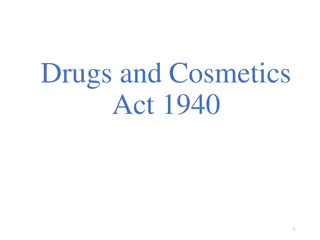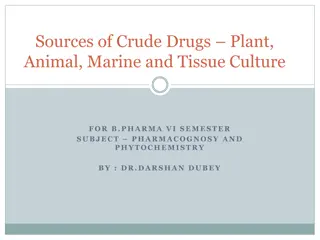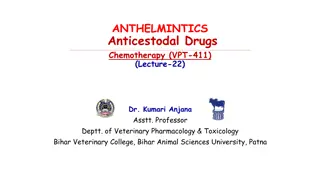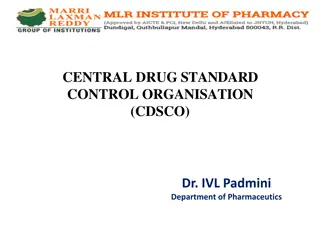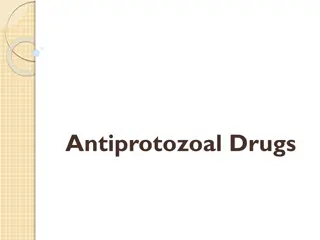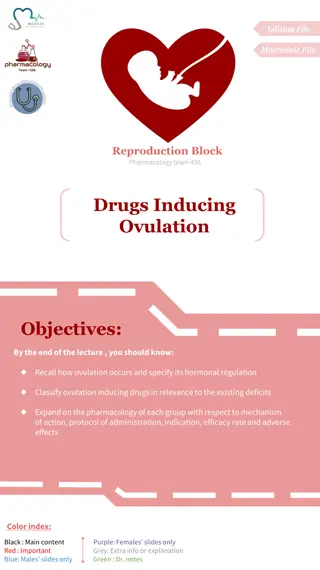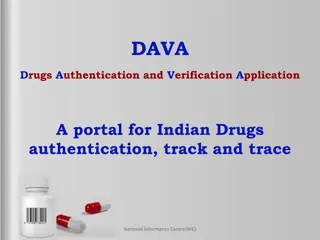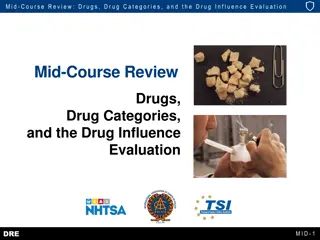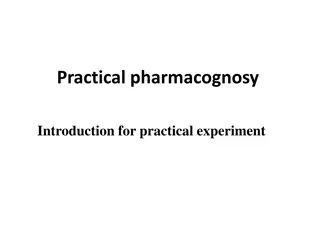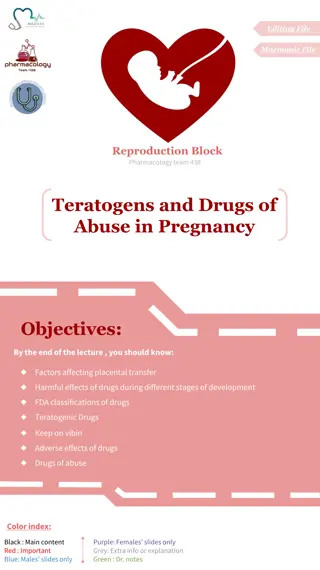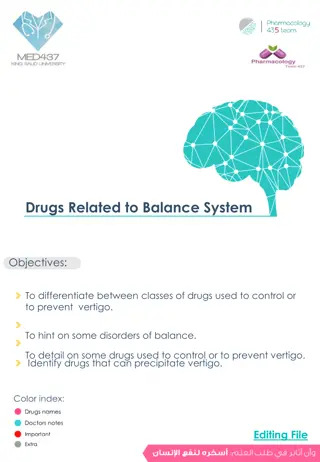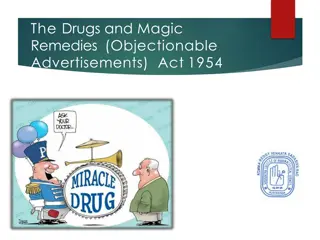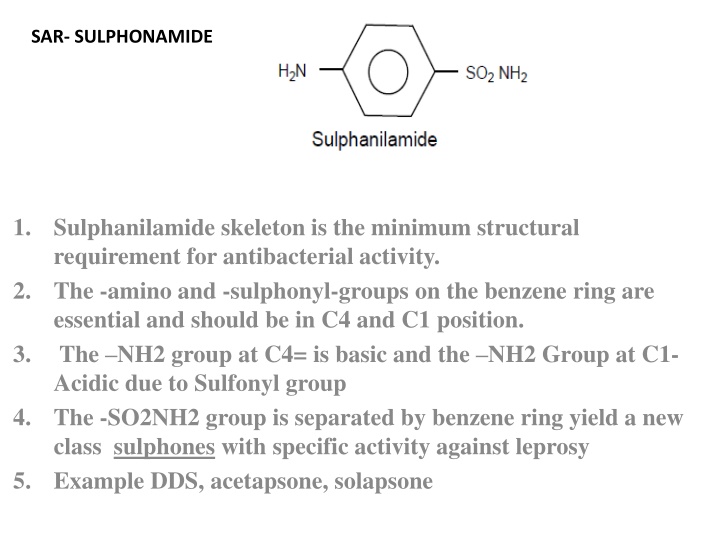
Antibacterial Agents: SAR of Sulphonamides and Drug Synthesis
Explore the structure-activity relationship of sulphonamides for antibacterial properties, focusing on key structural requirements and examples of drugs like Sulphanilamide, Trimethoprim, and Co-trimoxazole. Learn about the synthesis of important antibacterial agents like Trimethoprim, Sulpha-Methoxazole, Dapsone, and Sulphacetamide. Discover the essential roles of -amino and -sulphonyl groups in benzene ring positions for maximum activity against bacterial infections.
Download Presentation

Please find below an Image/Link to download the presentation.
The content on the website is provided AS IS for your information and personal use only. It may not be sold, licensed, or shared on other websites without obtaining consent from the author. If you encounter any issues during the download, it is possible that the publisher has removed the file from their server.
You are allowed to download the files provided on this website for personal or commercial use, subject to the condition that they are used lawfully. All files are the property of their respective owners.
The content on the website is provided AS IS for your information and personal use only. It may not be sold, licensed, or shared on other websites without obtaining consent from the author.
E N D
Presentation Transcript
SAR- SULPHONAMIDE 1. Sulphanilamide skeleton is the minimum structural requirement for antibacterial activity. The -amino and -sulphonyl-groups on the benzene ring are essential and should be in C4 and C1 position. The NH2 group at C4= is basic and the NH2 Group at C1- Acidic due to Sulfonyl group The -SO2NH2 group is separated by benzene ring yield a new class sulphones with specific activity against leprosy Example DDS, acetapsone, solapsone 2. 3. 4. 5.
6. Sulphur atom should be directly linked to the benzene ring 7. The active form of Sulphonamide is the ionized, maximum activity that is observed between the pKa values between 6.6 7.4. 8. The N-4 amino group could be modified to be pro-drugs, which are converted to free amino function in vivo. Phthalyl sulfathiazole belongs to the group of drugs called sulfonamides. The drug is a broad-spectrum antimicrobial that can treat different types of infections Including intestinal infection .
1.TRIMETHOPRIM 2,4 diamino-pyrimidine derivative antibacterial agents Nomenclature: 5-(3,4,5-Tri-methoxy phenyl methyl)-2,4- diamino pyrimidine It has synergetic anti bacterial activity with Sulpha drugs Example: Sulphamethoxazole
2. Co-trimoxazole Mixture of Sulpha-methoxazole and Trimethoprim at the ratio of 5:1 USES: Co-trimoxazole is used to treat certain bacterial infections, such as pneumonia (a lung infection), bronchitis (infection of the tubes leading to the lungs), and infections of the urinary tract, ears, and intestines. It also is used to treat 'travelers' diarrhea Dosage form: Tablets, Syrup (Bactrim DS, Septron etc..) Ratio: 800/160; 400/80 (SMO+TMP)
3. SULPHA METHOXAZOLE (Sulpha-isoxazole) Nomenclature 4-amino-N-(5-methyl-3-isoxazolyl) benzene sulphonamide Properties: White ,odorless crystals, having bitter tastes; very slightly soluble in water and in ether, Usual Dose: 500 mg Uses: Antibacterial agent for mainly UTI Caused by susceptible micro-organism Preparations: Sulpha methoxazole Tablets, syrup
OFFICIAL DRUG SYNTHESIS 1. TRIMETHOPRIM 2. SULPHA-METHOXAZOLE 3. DAPSONE 4. SULPHACETAMIDE
1. TRIMETHOPRIM (TMP) Synthesized from 3,4,5-trimethoxy benzaldehyde and Ethoxy-ethyl cyanide (ethoxy propio nitrile), further reacts with Guanidine yield intermediate, finally TMP obtained
3. SULPHA-METHOXAZOLE sulfamethoxazole can be prepared by reacting 3-amino-5-methylisoxazole with para-acetamidobenzenesulfonyl chloride (made by treating acetanilide with chloro- sulfonic acid). the acetyl group is then cleaved to yield sulfamethoxazole
3. DAPSONE (DDS) 2 mole of P-chloro-nitro-benzene reacts with sodium sulphide to yield 4,4- dinitro diphenyl sulphide upon oxidation and reduction gives amino derivative Diamino-Diphenyl-Sulphone (DDS)
4. SULPHACETAMIDE Acetylation with acetamide and p-amino- benzene sulphonyl chloride more water soluble SODIM salt can also be prepared by the reaction with NaOH


